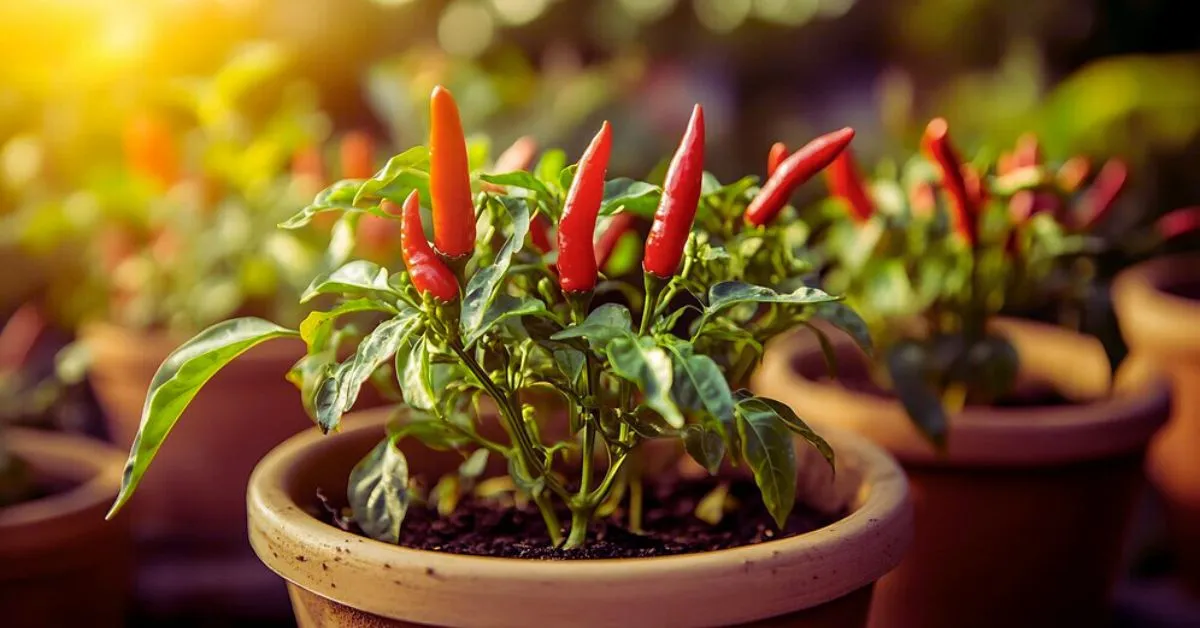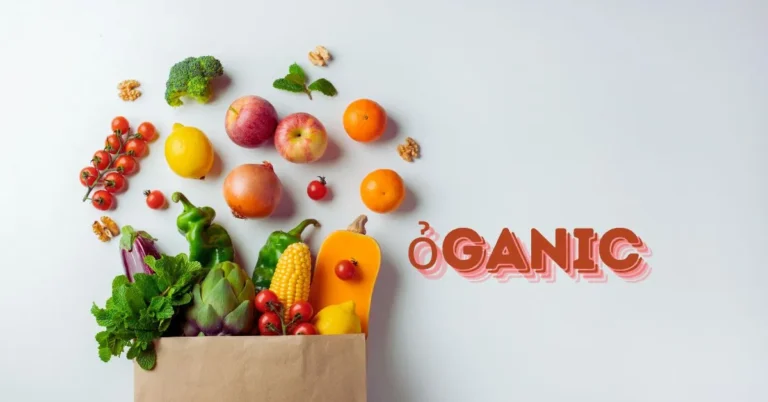Penosia Chili: A Vibrant and Versatile Ornamental Delight for Garden Enthusiasts
Penosia Chili much like its Poinsettia namesake, is an ornamental chili known for its striking resemblance to the decorative Christmas plant. This variety of chili is not just a visual treat, but it also offers mild, flavorful heat, making it an excellent choice for fresh consumption, cooking, pickling, and drying. Its compact size makes it ideal for small spaces such as windowsills, balconies, or patios. This article will guide you through everything you need to know about cultivating, caring for, and enjoying Penosia Chili, ensuring your plant thrives whether indoors or outdoors.
What is Penosia Chili?
A Brief Overview Penosia Chili is a small, bushy plant that produces numerous upright-growing, elongated chilies. These chilies grow in clusters and ripen into a striking red, resembling the arrangement of the Poinsettia flower. Its mild heat and versatile flavor make it perfect for adding a bit of spice to salads, dishes, or for pickling and preserving.
Key Characteristics:
- Height: Compact and bushy growth, ideal for small spaces.
- Fruit: Small, upright-growing red chilies.
- Flavor: Mild, suitable for various culinary uses.
- Ornamental Value: Beautiful, vibrant clusters that add decorative appeal to any space.
Cultivating Penosia Chili: A Step-by-Step Guide
Cultivating Penosia Chili requires some care, but with the right environment and attention, it can become a rewarding addition to your garden or indoor space. Whether you’re a seasoned gardener or a beginner, the following steps will help you grow your own healthy Penosia Chili plants.
Ideal Growing Conditions
Penosia Chili thrives in specific conditions, and understanding these is key to successful growth.
- Temperature: Germination temperature should range between 20 and 28°C (68-82°F). It typically takes 7-20 days for the seeds to germinate, so using a greenhouse or a heating mat to maintain warmth is recommended.
- Light: The plant needs at least 6 hours of direct sunlight daily, though more is preferable. If you’re growing it indoors, placing it near a sunny windowsill will help.
- Soil: Penosia Chili requires fresh, well-fertilized, permeable soil. Avoid waterlogging by ensuring good drainage. A balanced mix of organic compost and potting soil works best.
- Humidity: Like most chilies, Penosia benefits from moderate humidity levels but should not be overwatered, as excess moisture can lead to root rot.
Sowing and Planting
Start by sowing the seeds indoors in pots about 6-8 weeks before the last frost.
- Step 1: Fill small pots with seed-starting mix and plant the seeds about 0.5 cm deep. Keep the soil consistently moist, not wet.
- Step 2: Cover the pots with plastic wrap or a clear dome to maintain humidity, and place them in a warm location.
- Step 3: Once the seedlings have sprouted and are a few inches tall, remove the cover and place them in a bright, sunny spot.
- Step 4: After the last frost has passed (around 2-3 weeks after), you can move the plants outdoors, or you can continue growing them in pots indoors.
If planting outdoors, make sure the plants are spaced at least 25 cm apart to allow them room to grow and spread.
Watering and Fertilization
Penosia Chili plants require moderate watering. Here’s how to manage their watering schedule:
- Watering: Water the plants when the top layer of soil feels dry. It’s crucial not to overwater, as waterlogging can damage the roots.
- Fertilization: A balanced, nitrogen-rich fertilizer should be applied during the growing season. Once the plants begin flowering and fruiting, switch to a fertilizer that’s rich in potassium to encourage healthy fruit development.
Maintenance and Pruning
Penosia Chili plants are relatively low maintenance, but a bit of pruning can go a long way in ensuring a healthy yield.
- Pruning: To encourage bushier growth, pinch off the top of the plant once it reaches a height of about 20 cm. This will stimulate the growth of side branches, increasing the number of chilies produced.
- Staking: If the plant grows tall and starts to lean, provide support with small stakes to keep the branches upright.
Benefits of Growing Penosia Chili
Growing Penosia Chili isn’t just about its aesthetic appeal; it offers several practical benefits as well.
Edibility and Culinary Uses
Unlike some ornamental chilies that are grown purely for their looks, Penosia Chili produces mildly spicy chilies that are perfect for a variety of culinary uses.
- Fresh Consumption: Add Penosia chilies to salads for a burst of mild heat.
- Cooking: These chilies are excellent in stir-fries, soups, and sauces.
- Pickling and Drying: You can pickle Penosia chilies for long-term storage, or dry them to create a homemade chili powder for future use.
High Yield Over Multiple Seasons
Penosia Chili plants can live for several years if properly cared for. If you provide enough warmth and light during the colder months, the plants will continue to produce fruit into their second and third years, often with a higher yield in subsequent seasons.
Compact and Decorative
Penosia Chili is a great plant for small spaces. Its compact size means it can easily be grown in pots on windowsills, patios, or balconies, making it a perfect choice for urban gardeners. The vibrant red chilies offer a bright pop of color, making the plant a lovely ornamental feature in any home or garden.
Troubleshooting Common Issues
Even with the best care, you may encounter some challenges when growing Penosia Chili. Here’s how to deal with common problems.
Pests and Diseases
- Aphids: Small, sap-sucking insects that can damage the leaves. Treat with neem oil or insecticidal soap.
- Root Rot: Overwatering or poor drainage can cause root rot. Ensure pots have proper drainage, and avoid waterlogging the soil.
- Blossom Drop: If flowers fall off before fruiting, it could be due to temperature fluctuations or inconsistent watering. Maintain stable growing conditions to prevent this.
Poor Fruit Production
If your Penosia Chili isn’t producing many fruits, it may be due to inadequate sunlight, poor soil, or lack of pollination. Make sure the plant gets at least 6 hours of direct sunlight and provide proper nutrients. If growing indoors, hand-pollination can help—simply use a small brush to transfer pollen between flowers.
Harvesting and Storing Penosia Chilies
Once your Penosia Chilies have ripened to a bright red, they’re ready for harvest.
- Harvesting: Use scissors or pruning shears to snip the chilies from the plant, avoiding damage to the stems. The chilies can be harvested once they turn red, but you can leave them on the plant longer for a slightly more intense flavor.
- Storing: Fresh chilies can be stored in the refrigerator for up to two weeks. For long-term storage, consider pickling or drying them. Dried chilies can be ground into powder or flakes for later use.
Conclusion
The Penosia Chili is not only a feast for the eyes but also a delight in the kitchen. With its mild heat, ornamental appeal, and easy-growing nature, it’s the perfect addition to any home garden or indoor space. Whether you’re a seasoned gardener looking for a unique plant or a beginner seeking a versatile chili that’s easy to care for, the Penosia Chili is an excellent choice. With proper care, you’ll enjoy its vibrant fruits for years to come, making it a rewarding and lasting addition to your gardening repertoire.
FAQs
How long does it take for Penosia Chili seeds to germinate?
Germination typically takes 7-20 days under temperatures of 20-28°C.
Can Penosia Chili be grown indoors?
Yes, Penosia Chili thrives in pots on windowsills or indoors with sufficient sunlight.
How spicy are Penosia Chilies?
Penosia Chilies have a mild heat, making them suitable for fresh consumption and cooking.
How much sunlight does Penosia Chili need?
The plant requires at least 6 hours of direct sunlight per day.
Can Penosia Chili be grown year-round?
Yes, with enough warmth and light, it can be grown year-round and even produce higher yields in subsequent years.






